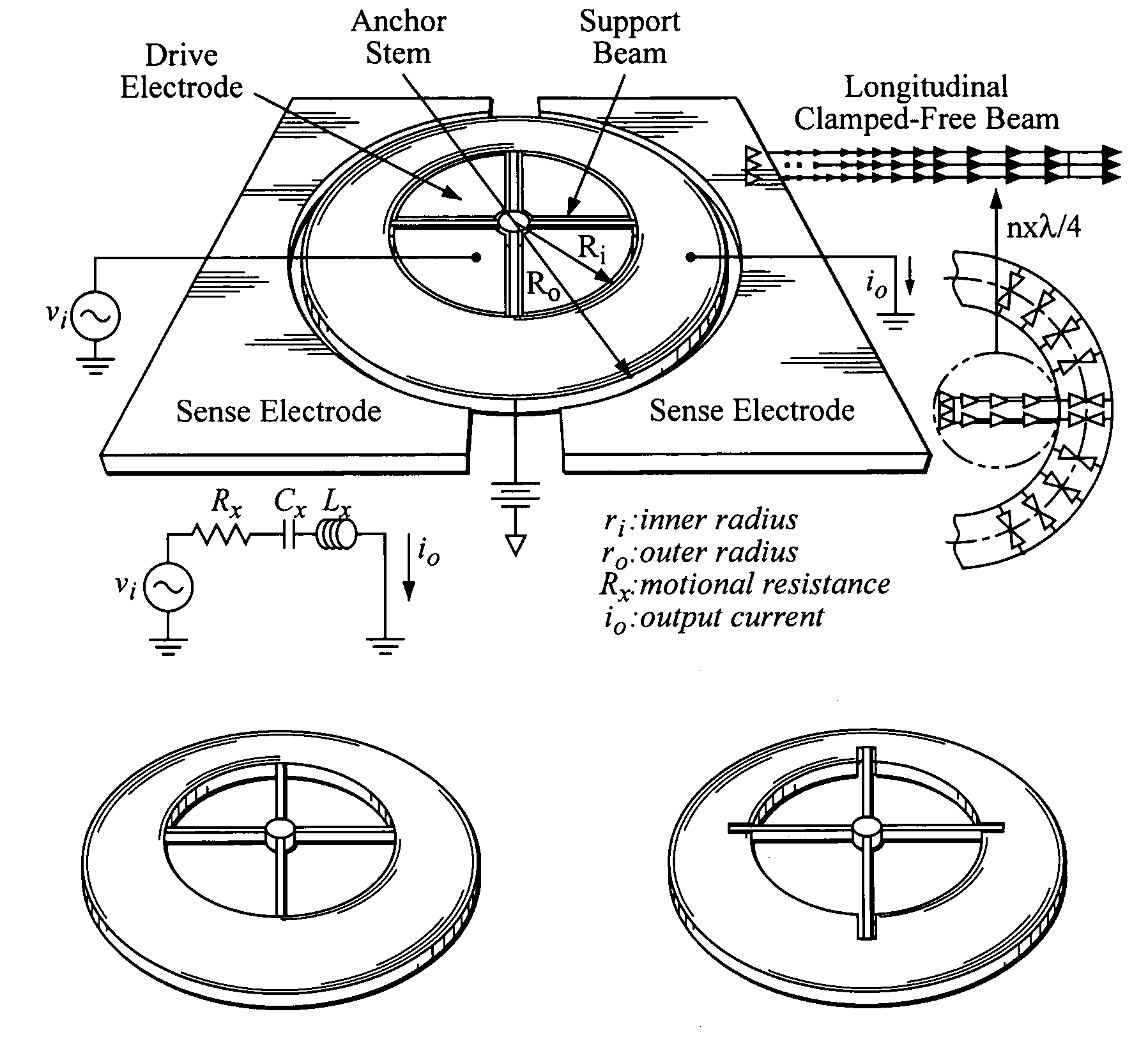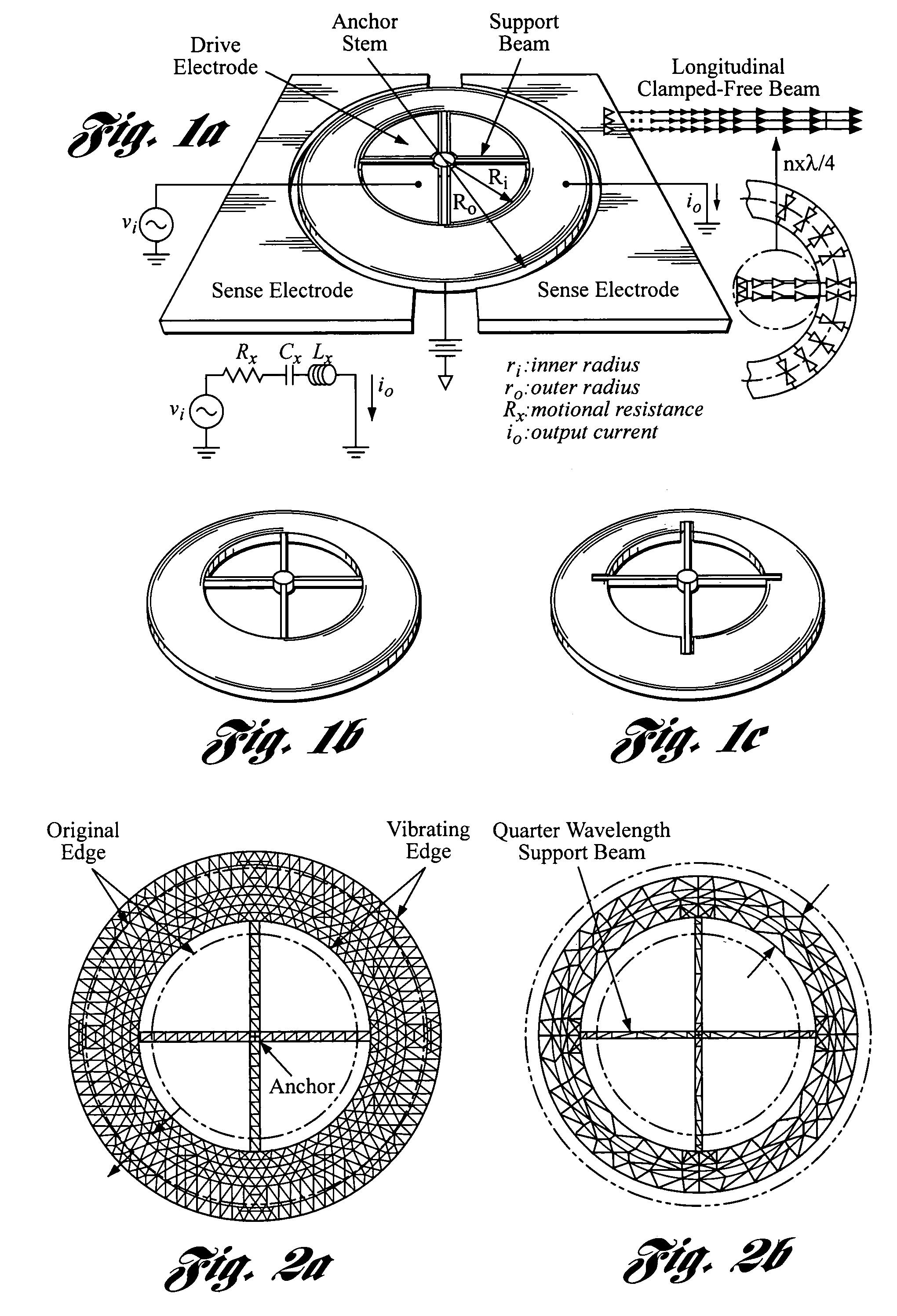High-Q micromechanical resonator devices and filters utilizing same
a micromechanical resonator and filter technology, applied in the direction of impedence networks, electrical devices, etc., can solve the problems of reducing the robustness and power reducing the efficiency of the overall system, and the removal of filters that do little to relax the requirements, so as to reduce mechanical losses to the substrate
- Summary
- Abstract
- Description
- Claims
- Application Information
AI Technical Summary
Benefits of technology
Problems solved by technology
Method used
Image
Examples
Embodiment Construction
[0119]One embodiment of the present invention provides a radial ring resonator that uses a centralized support structure and notching at the support attachment locations that together greatly reduce support losses and allow polysilicon ring resonator Q's in excess of 10,000 at frequencies past 1 GHz. The specific design, shown in FIG. 1(a), is dubbed the “hollow-disk” ring resonator, since it is obtained by removing quadrants of material from a solid disk resonator [8], but purposely leaving intact beams or spokes of material to non-intrusively support the ring structure.
[0120]The hollow resonator has a central cavity in which a hub of material is disposed and supported on a stem. The beams or spokes radiate from the hub at their inner ends and support the resonator above the substrate at their outer ends.
[0121]Using an un-notched version of this design (i.e., FIG. 1b), several vibration modes have been demonstrated spanning frequencies from HF (24.4 MHZ), to VHF (72.1 MHZ), to UHF ...
PUM
 Login to View More
Login to View More Abstract
Description
Claims
Application Information
 Login to View More
Login to View More - R&D
- Intellectual Property
- Life Sciences
- Materials
- Tech Scout
- Unparalleled Data Quality
- Higher Quality Content
- 60% Fewer Hallucinations
Browse by: Latest US Patents, China's latest patents, Technical Efficacy Thesaurus, Application Domain, Technology Topic, Popular Technical Reports.
© 2025 PatSnap. All rights reserved.Legal|Privacy policy|Modern Slavery Act Transparency Statement|Sitemap|About US| Contact US: help@patsnap.com



